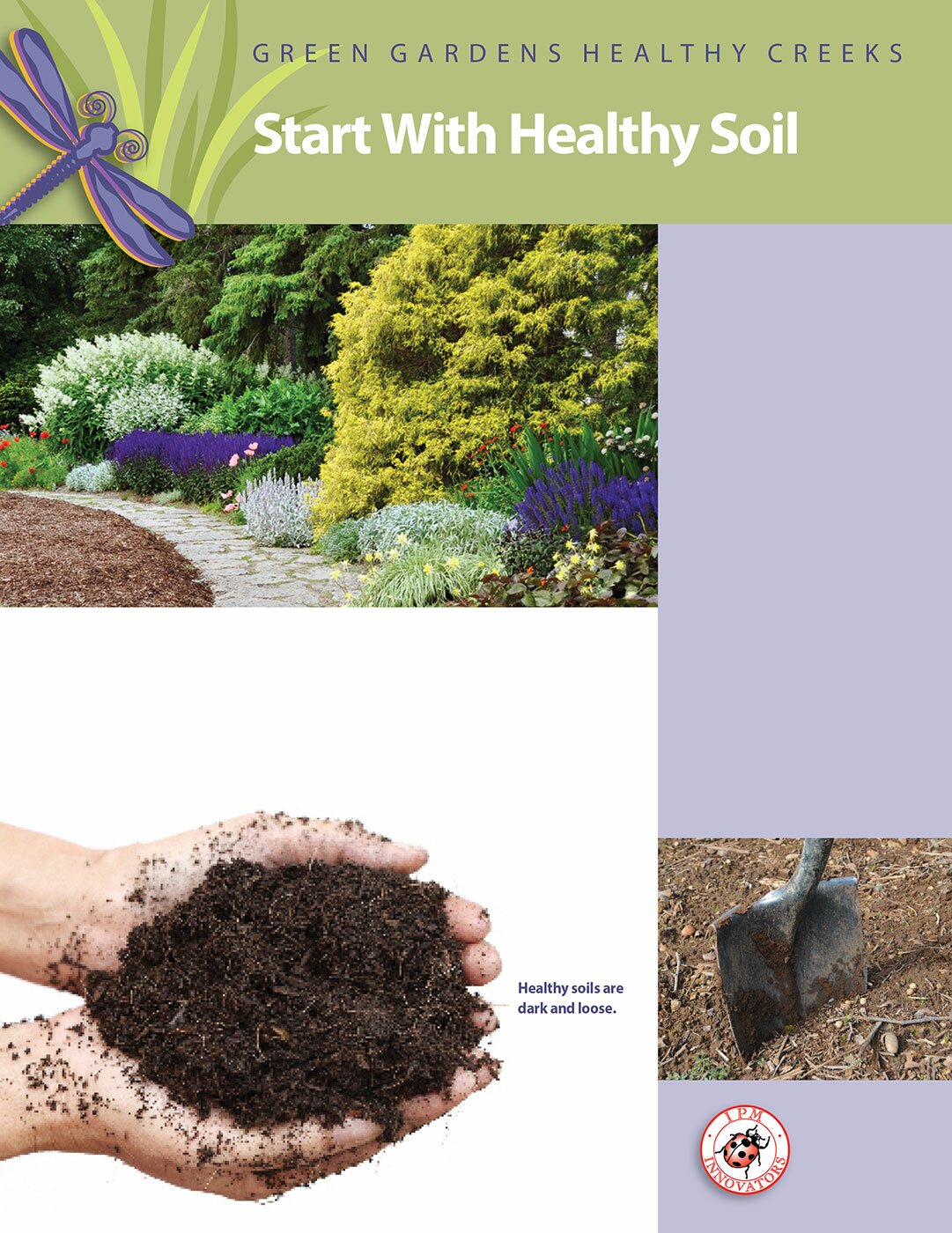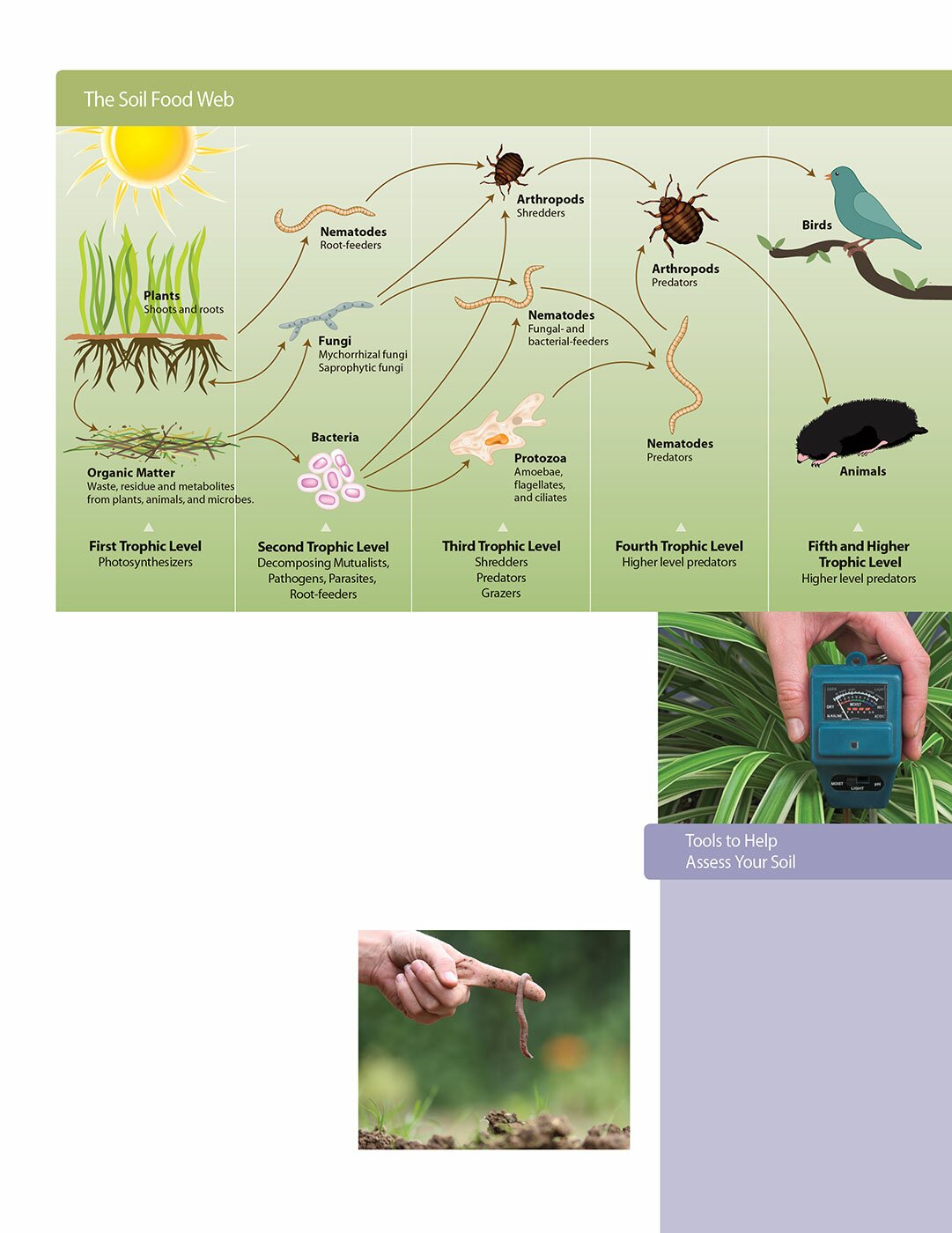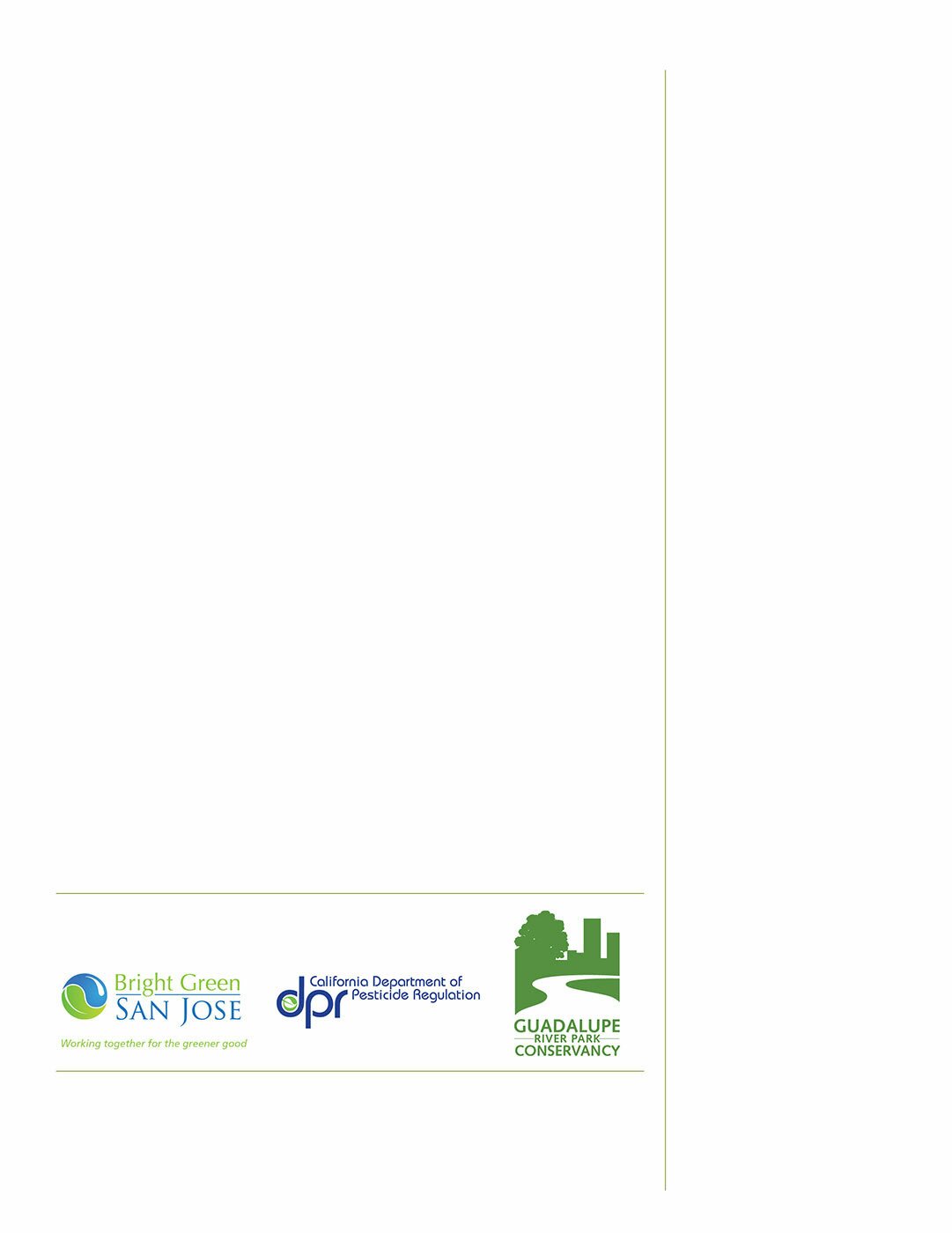
Why Does Healthy Soil Matter?
Healthy soil is the foundation of a healthy landscape. It protects, anchors, and keeps roots oxygenated while storing and supplying water and essential nutrients. Only healthy, living soil can perform all of these critical functions. A plant in healthy soil looks better and resists stress from weather, pests, and diseases.
What is Healthy Soil?
Healthy soil is an ecosystem teeming with life. It is a combination of organic matter, microorganisms, worms, insects, mites, fungi, and other living things. You can evaluate the health of your soil by touch, smell, color, and the presence of beneficial living organisms.
Dig deeper into soil health:
- Smell the soil. An earthy aroma indicates the presence of beneficial microorganisms. No odor or a mineral odor indicates too little soil life. If your soil smells like rotten eggs, it is probably too wet and compacted to allow oxygen exchange.
- Look at the soil. Healthy soils are dark and loose. The dark color comes from organic matter, the foundation of the soil food web.
- Look for soil life. Earthworms, mites, millipedes, centipedes, and sowbugs indicate a healthy soil ecosystem.
- Feel the soil. Is your soil gritty or slippery? Soil texture is an important clue to soil health. Read on to learn how to understand the physical properties of soil.
- Soil Test. To know the chemical properties of your soil, a laboratory test is needed. Read on to find out more about the need for and importance of a lab test.
City of San José:
the IPM Innovator
Award Winner 2010

Moisten a small handful of soil and make a hot dog shape in the palm of your hand. Gently squeeze the soil out (over your forefinger with your thumb) and see how long a ribbon you can make before the soil breaks off. Clay feels sticky and slippery and the ribbon breaks between 1-2 inches. Clay loam feels sticky, but the ribbon breaks at about 1 inch. Sandy loam feels gritty and sticks together, but won’t form a significant ribbon. Sandy soil feels gritty and the ribbon falls apart before it is even through your fingers!
Soil properties help you decide which plants to use in your yard and how frequently to water them.
Soil Texture
Soil texture is a product of the proportion of different soil particles — sand (large), silt (medium), and clay (small).
Sandy soils drain quickly and have trouble holding water and nutrients.
Clay soils retain water and nutrients, but may not let oxygen penetrate, and may be hard to work with.
Loamy soil or Loam is the ideal combination of soil particle sizes that hold water and nutrients and drain well: about 40% sand, 40% silt, and 20% clay.
How Soil Texture Affects your Yard
A soil’s texture affects the way water flows through it, which influences irrigation. For example, water moves slowly in clay soils, so care must be taken to irrigate them at the right rate. Sandy soils let water run through quickly, requiring shorter, and more frequent watering. Soil texture also influences plant choices. Plants adapted to sandy, well-draining soils will be more prone to pest and disease problems if planted in heavier clay soils. Similarly, plants adapted to clay soils will not thrive in sandy conditions.
Soil Testing Helps you Decide
Before renovating your landscape or planting a vegetable garden you may want to invest in a laboratory soil test. The test will reveal your soil’s pH, organic content, nutrients, salt content, and potential contaminants. The test is usually inexpensive, but can be very helpful. Most labs will ask you to send samples by mail. Follow their instructions to collect soil samples from your yard.
Labs also provide recommendations to address soil deficiencies. This will help you determine the best amendments or fertilizers for your yard, should you need it. Always ask the lab for organic fertilizer recommendations, which are always preferable. Refer to the Fertilize Responsibly, Compost for Healthy Soil and Plants, and Guide to Mulch factsheets in this series to learn more about various ways to nourish your soil.

Organic Matter Helps Structure the Soil
While “soil texture” refers to the type of inorganic particles in your soil, “soil structure” describes how those particles are bound together into larger units or “aggregates.” Aggregates form as soil microbes break down organic matter and produce a gum-like substance that cements particles together. As soil structure improves, more spaces are created between large and small aggregates, making it easier for air and water to circulate. Good soil structure helps lessen the harmful effects of challenging soil textures such as clay and sand. In this way, soil organic matter helps:
- Retain water in sandy soils
- Drain water in clay soils
- Resist compaction
- Improve root growth and air circulation
- Retain nutrients near the roots
- Protect plant roots from salt buildup, temperature extremes, and water stress
Soil Life
A healthy soil ecosystem includes a rich food web of fungi, bacteria, insects and worms. Organic matter is the base of this web. A sustainable landscape returns nutrients to the soil food web as microbes break down organic matter. Microbes, worms, and other soil organisms also bind particles together and transform plant residues and animal wastes into stable soil organic matter or humus. Humus can store up to 90 percent of its weight in water and holds nutrients, protecting them from washing away.
Simple tools can help you keep your finger on the pulse of your soil ecosystem.
- A soil probe can show the depth of water penetration and overall soil structure.
- A soil pH test can help evaluate the need for certain amendments and fertilizer.
- A moisture meter accurately measures your soil’s moisture content helping to fine-tune irrigation.

Rebuilding Healthy Soils
Use the table below to identify sustainable solutions for rebuilding healthy soils
| Problems or Practices that Diminish Soil Health | Solutions for Rebuilding Soil Health |
|---|---|
| Bare soil is easily eroded and compacted Soil life is starved when leaves and clippings are raked away. | Maintain a two to four inch layer of mulch on the soil surface. This supplies organic matter, helps infiltrate and retain water, and prevents compaction. Use green waste from your yard as mulch or buy locally recycled green waste mulch. See also the Compost for Healthy Soil and Plants and Guide to Mulch factsheets. |
| Overuse of quick-release fertilizer Synthetic fertilizers made of salts kill populations of beneficial soil microbes. | Feed the soil and your plants with compost. Make your own, or purchase quality, certified compost made from locally recycled materials. Use natural fertilizers made from biological ingredients. Practice grass-cycling by leaving grass clippings on lawns so that nutrients and organic matter are returned to the soil. See also the Fertilize Responsibly factsheet. |
| Overuse of pesticides Broad-spectrum pesticides kill soil decomposers and soil-dwelling predators of insect pests. | Use an integrated pest management (IPM) approach to control weeds and pests. IPM uses horticultural, physical, biological and less-toxic chemical controls that protect the health of soil, water, humans, and beneficial insects. Visit www.ipm.ucdavis.edu for information about IPM strategies for specific pests. |
| Cultivating wet soil Damages soil structure and results in compaction, suppressed root growth, and reduced air circulation. | Help earthworms and other soil life to rebuild soil structure by applying a layer of compost and/or mulch. Grow deep-rooted plants such as California native grasses and green manures whose living and decaying roots will create air spaces and add organic matter. |
Developed by Ecology Action of Santa Cruz consulting with the City of San José IPM Program, 408-945-3000.
Content reviewed by A. Sutherland, Urban IPM Advisor Alameda County, UC Statewide IPM Program.
For more information about sustainable gardening, please visit www.bayareaecogardens.org
Additional Resources
Helpful Websites:
Santa Clara Valley Water District
Bay-Friendly for Home Gardeners
Soil Science Society of America developed a set of 12 videos, centered around SSSA's monthly communications themes.